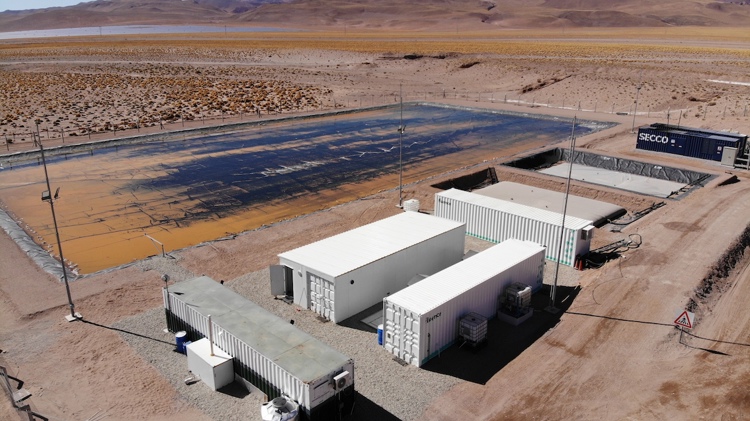
Located in Salta, Argentina, at 4,100 meters AMSL, the plant is currently devoted to test the selected DLE technology with different salar brines. The results so far are promising and allowed further optimizations, which in turn provide essential data for the process scale-up.

Tecpetrol in collaboration with Techint E&C carried out the Direct Lithium Extraction (DLE) pilot plant detailed design to the project execution, commissioning and start-up, which was a challenge on its own considering the remote location and harsh environment; and it was all done in a record time of seven months.
This initiative represents a technological milestone in the DLE segment since it is the first plant of this type operating in Latin America and it could define the new dominant design for DLE in the region. “This technology allows for selective Lithium recovery and concentration, with short cycle times, low water consumption and output streams ready for re-injection in the salars”, explains Nicolás Fiandrino, Tecpetrol Energy Transition Technology Expert. “This process improves production efficiency as it significantly shortens processing times and extracts around 90% of Lithium compared to the 30-50% extracted with evaporitic methods in traditional plants”.
The Lithium obtained in ‘The Triangle’, i.e. Argentina, Chile, and Bolivia, comes from brine, an aqueous solution pumped from underground. In the traditional process, the brine is poured on large ponds, which can have individual areas of 60 km2 or more. That brine is then concentrated by evaporation, after which it is treated to purge it of other metals, such as sodium and magnesium, and the lithium is precipitated as lithium carbonate. All this takes time; often as much as two to three years.
For this reason, DLE, a multi-stage chemical process that replaces natural evaporation, is believed to be the new breakthrough in Lithium extraction from salar brines. This was the driver for the construction of this new pilot plant in Salta.
The future of energy
Lithium is a crucial piece of energy storage. One of its main applications is the manufacturing of cell phones, computers, and electric vehicles (EV) batteries. The best alternative to decarbonize the passenger transport sector is through EVs powered by renewable electrical energy. A likely consequence of this trend is that the demand and price of Lithium are expected to keep on increasing.
The ultimate objective of the pilot plant is to scale-up the DLE technology to an industrial level. Currently, the plant has a capacity of 25 tons/year LCE (Lithium Carbonate Equivalent) and processes around 1,000 liters of brine per hour.
"For the Techint Group, this is a very important spearhead that allows us to enter the world of Lithium production through a productive, efficient and more environmentally friendly road," explained Fiandrino.
Challenging conditions in a harsh environment
The plant is located at 4,100 meters AMSL. Among the many challenges, there is the lack of roads in the area, as well as of general infrastructure, and there are thermal and humidity amplitudes. These conditions however were part of the project design: the technology must prove performance in a representative site, and be feasible in the worse scenario.
Patricio Prandi, Commercial Manager at Techint E&C, highlighted that "working at these high altitudes was really challenging, but that is precisely the company’s differential from others. We accomplished this challenge thanks to the detailed planning of each activity, and it is a project that will allow us to develop new capabilities in the Lithium segment, where we are seeking to position ourselves”.